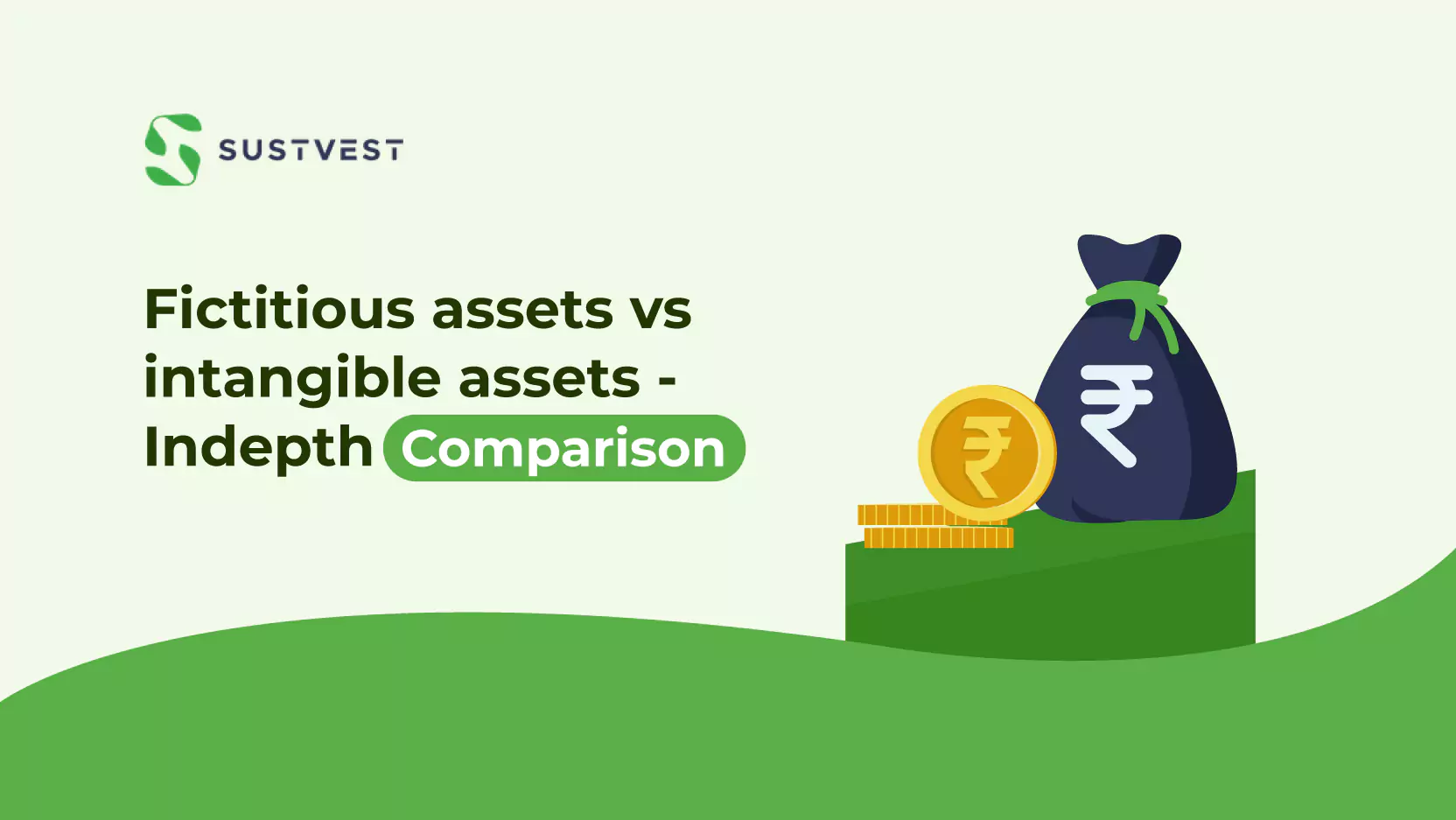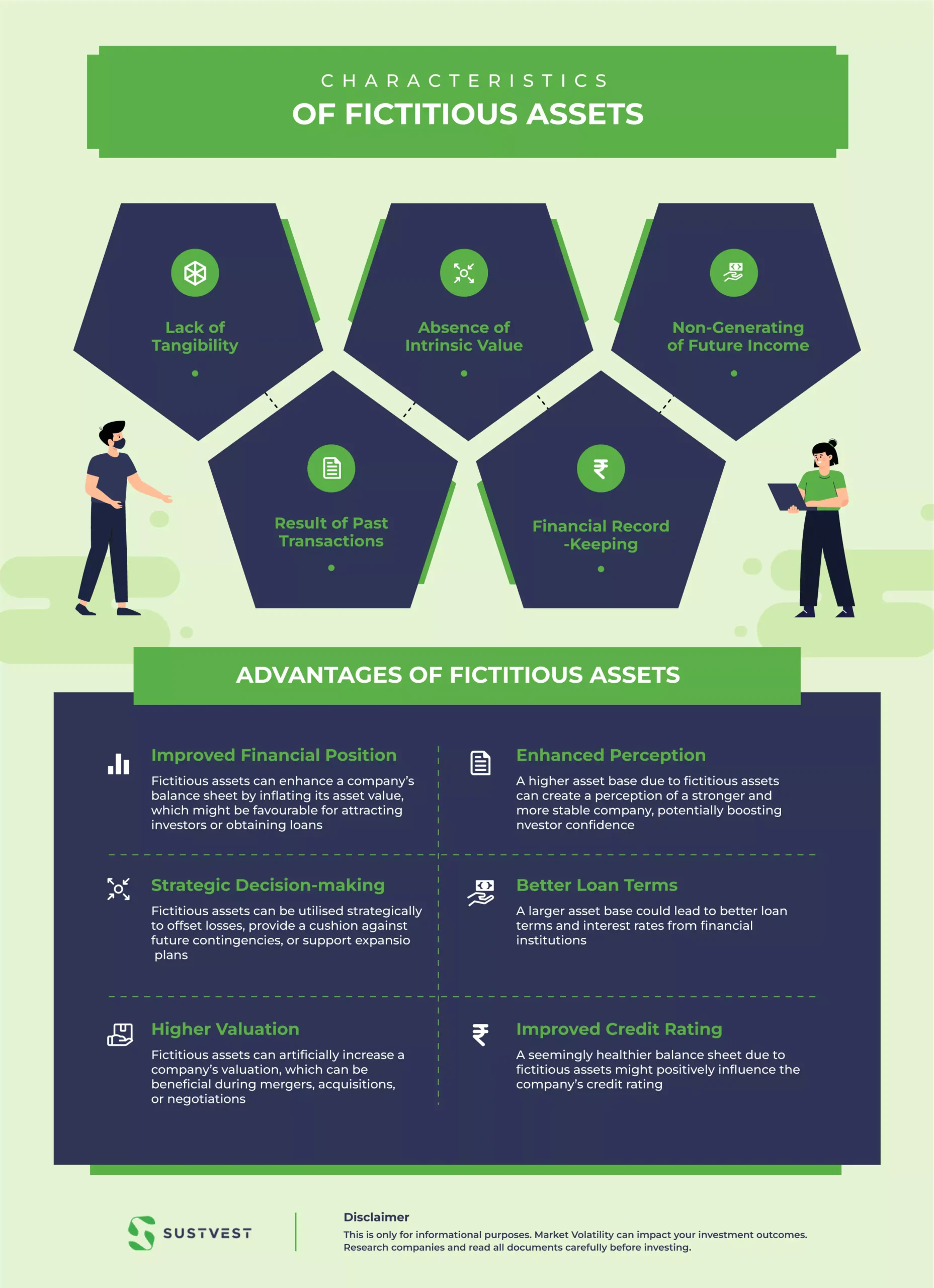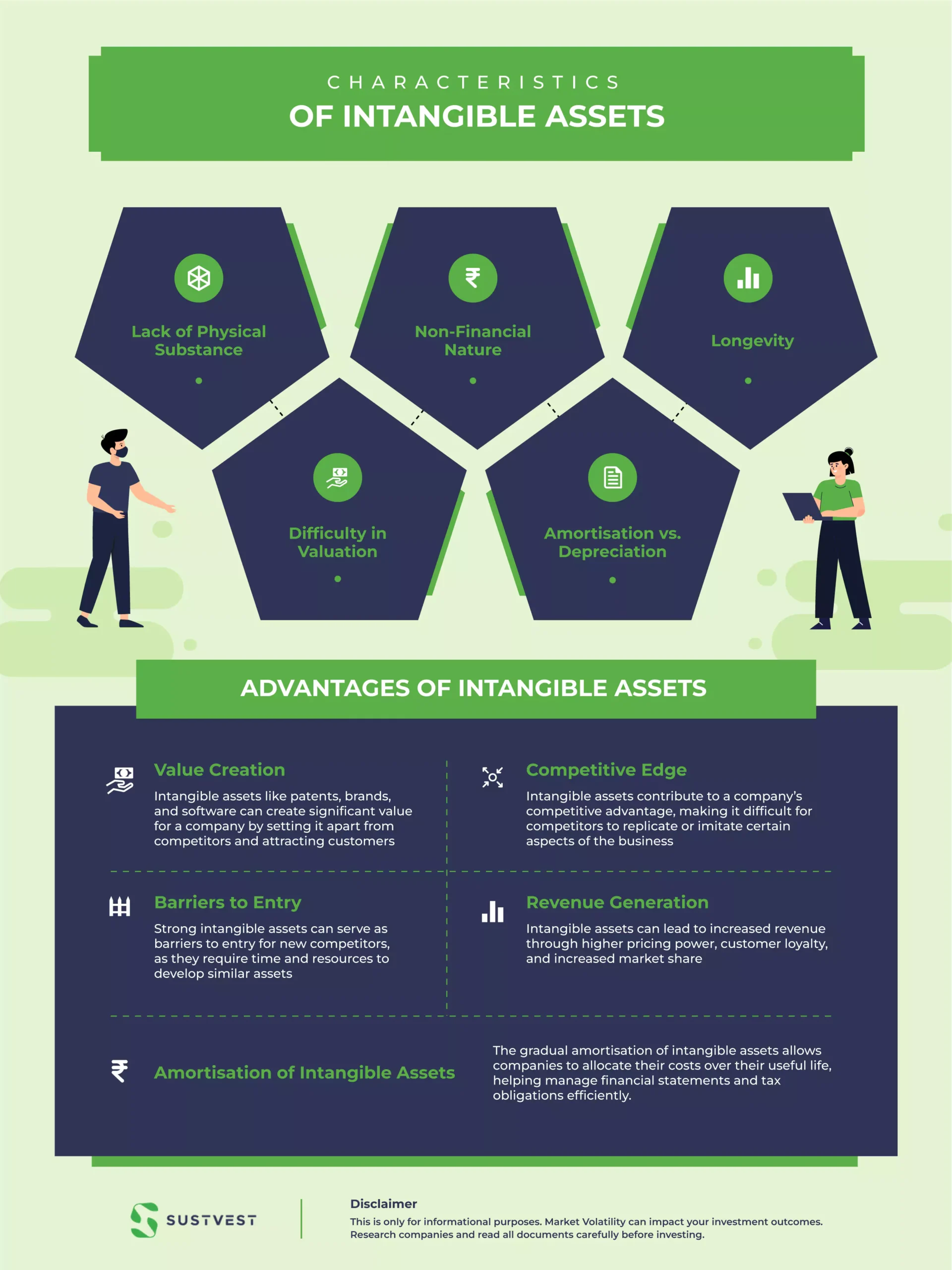Have you ever paused to wonder about the hidden forces driving a company’s valuation? What if we told you there’s more than meets the eye?
Ever stumbled upon ‘Fictitious Assets’ and ‘Intangible Assets’ while glancing through a balance sheet and wondered, “What’s the real deal behind these? You’re not alone!
These terms, often wrapped in a layer of financial jargon, can be puzzling.
But here’s the catch: understanding their distinct roles can be a game-changer for anyone keen on financial clarity. While ‘Fictitious Assets’ might sound like fairy-tale treasures, they play concrete roles in financial storytelling.
On the flip side, ‘Intangible Assets,’ untouchable as they are, often hold the magic wand that sets a company apart. So, let’s demystify this.
Let’s peel back the layers, spotlight their individual importance, and, most importantly, pinpoint the differences that matter. It’s time to decode ‘fictitious assets vs intangible assets’ in a language everyone can understand.
Ready to dive in?

What are Fictitious Assets?
Fictitious assets, often termed non-physical or intangible assets, are unconventional entries on a company’s balance sheet. They lack intrinsic value and emerge from expenses or losses challenging typical asset criteria.
These assets don’t yield future economic benefits, yet they’re recorded to maintain accurate financial records.
Fictitious assets include deferred revenue, where income is received in advance; fictitious receivables, which are unlikely to be collected; and accumulated losses that don’t align with traditional asset definitions.
Characteristics of Fictitious Assets
Fictitious assets possess distinct characteristics that set them apart from tangible or traditional intangible assets.
These include:
- Absence of Intrinsic Value: Unlike tangible assets with inherent value, fictitious assets lack economic value on their own.
- Non-Generating of Future Income: Fictitious assets do not contribute to future revenue generation or income streams for the company.
- Result of Past Transactions: They arise from past expenses, losses, or financial entries that don’t conform to conventional asset criteria.
Understanding these distinct characteristics of fictitious assets is crucial for accurate financial analysis and decision-making within a company.
Advantages of Fictitious Assets
Fictitious assets are intangible resources that appear on a company’s balance sheet but do not have a physical presence or inherent value.
One common example of a fictitious asset is “goodwill.” goodwill is fictitious asset that arises when one company acquires another company for a price higher than the fair market value of its identifiable net assets.
:
- Improved Financial Position: Fictitious assets can enhance a company’s balance sheet by inflating its asset value, which might be favourable for attracting investors or obtaining loans.
- Enhanced Perception: A higher asset base due to fictitious assets can create a perception of a stronger and more stable company, potentially boosting investor confidence.
- Better Loan Terms: A larger asset base could lead to better loan terms and interest rates from financial institutions.
- Higher Valuation: Fictitious assets can artificially increase a company’s valuation, which can be beneficial during mergers, acquisitions, or negotiations.
- Improved Credit Rating: A seemingly healthier balance sheet due to fictitious assets might positively influence the company’s credit rating.
When considering the strategic positioning of fictitious assets, it might be prudent also to ask, What is the Golden Rule of Investment in 2023? This could offer a fresh perspective on asset value and integration into financial strategies.

What are Intangible Assets?
Intangible assets are non-physical assets that hold value for a company, deriving from intellectual or creative endeavours, like patents, trademarks, and goodwill. They lack a physical presence but contribute significantly to a company’s competitive advantage and revenue generation.
Intangible assets are subject to amortisation, a process of allocating their cost over their estimated useful life.
Properly managing and assessing these assets is vital for understanding a company’s true worth and strategic direction.
Characteristics of Intangible Assets
Intangible assets are assets that lack a physical presence but hold significant value for a business. Here are five major characteristics of intangible assets:
- Lack of Physical Substance: Intangible assets do not have a physical form, unlike tangible assets like machinery or inventory. They exist as rights, privileges, or contractual agreements.
- Non-Financial Nature: Intangible assets are not usually monetary in nature, but they contribute to a company’s value by enhancing its competitive advantage, reputation, or ability to generate future cash flows.
- Longevity: Many intangible assets have the potential to provide benefits to a business for an extended period. Some intangibles, like patents, copyrights, and trademarks, have legal protections that can extend their useful life.
- Difficulty in Valuation: Valuing intangible assets can be challenging due to their lack of physical presence and the subjective nature of their worth.
- Amortisation vs. Depreciation: Intangible assets are typically amortised over their useful life, reflecting their gradual consumption or expiration. Unlike tangible assets, which undergo depreciation, the concept of depreciation on intangible assets as per the companies act may not directly apply, as the specific treatment depends on accounting standards and regulations.
Pro Tip: . The application of these concepts can vary based on the accounting framework and legal regulations in different jurisdictions.
Advantages of Intangible Assets
Intangible assets are often crucial for the success and growth of a company. Here are some advantages of intangible assets:
- Value Creation: Intangible assets like patents, brands, and software can create significant value for a company by setting it apart from competitors and attracting customers.
- Competitive Edge: Intangible assets contribute to a company’s competitive advantage, making it difficult for competitors to replicate or imitate certain aspects of the business.
- Barriers to Entry: Strong intangible assets can serve as barriers to entry for new competitors, as they require time and resources to develop similar assets.
- Revenue Generation: Intangible assets can lead to increased revenue through higher pricing power, customer loyalty, and increased market share.
- Amortisation of Intangible Assets: The gradual amortisation of intangible assets allows companies to allocate their costs over their useful life, helping manage financial statements and tax obligations efficiently.
After understanding these benefits, you might be wondering about Exploring the Different Types of Investment Decisions. Diversifying your investments is the key to a resilient portfolio.

Fictitious Assets vs Intangible Assets
Here’s a comparison table between fictitious assets and intangible assets, along with examples of each:
| Aspect | Fictitious Assets | Intangible Assets |
| Definition | Fictitious assets are non-existent or artificial assets that are recorded on the balance sheet but do not have any real economic value. | Intangible assets are non-physical assets that have value due to their intellectual or legal rights and are not tangible in nature. |
| Economic Value | Fictitious assets lack real economic value and are usually created for accounting or presentation purposes. | Intangible assets have intrinsic value and can contribute to a company’s revenue generation, competitive advantage, or innovation. |
| Examples | Deferred revenue, fictitious accounts receivable, goodwill arising on amalgamation (not identifiable), etc. | Patents, copyrights, trademarks, brand value, software licenses, customer lists, etc. |
| Recognition | Fictitious assets are often recognised as assets on the balance sheet to balance out the accounting equation, but they have no underlying value. | Intangible assets are recognised on the balance sheet if they meet certain criteria, such as being separable, identifiable, and having measurable future economic benefits. |
| Impact on Business | Fictitious assets do not contribute to a company’s value, operations, or competitive position. | Intangible assets can enhance a company’s competitiveness, revenue, and market presence. |
| Legal Protection | Fictitious assets are not legally protected and have no inherent rights. | Intangible assets, such as patents and copyrights, are legally protected intellectual property that grants exclusive rights to the owner. |
| Transferability | Fictitious assets cannot be transferred or sold since they lack real value. | Intangible assets can be sold, licensed, or transferred to other parties, generating revenue or royalties. |
| Reporting and Valuation | Fictitious assets are usually disclosed as notes to the financial statements, and their value is not subject to appraisal. | Intangible assets are reported on the balance sheet at cost or fair value, and their value can be appraised by professionals. |
FAQs : fictitious assets vs intangible assets
How do intangible assets differ from fictitious assets?
Intangible assets have real value and represent non-physical assets like patents, copyrights, and trademarks. They can generate future economic benefits, unlike fictitious assets.
Can fictitious assets become valuable over time?
No, fictitious assets don’t hold the potential to appreciate in value.
Are intangible assets always recorded on the balance sheet?
Intangible assets with identifiable value are recorded on the balance sheet, provided their cost can be reliably measured. Examples include acquired brands and software licenses.
How can understanding these assets benefit investors?
Understanding the difference between fictitious assets and intangible assets aids investors in making informed decisions. It helps them differentiate between assets that hold real value and those that don’t, contributing to wiser investment choices.
Conclusion
Understanding the distinction between fictitious assets vs intangible assets is crucial for informed financial decision-making.
Fictitious assets lack real value, while intangible assets hold substantial value through their intellectual property and brand recognition. To make sound investment choices, grasp the nuances of these asset types.
In wrapping up, remember to keep informed on related financial topics like Solar Financing – Everything You Need To Know. Diverse knowledge helps paint a clearer picture of the financial realm.
For comprehensive insights on sustainable investing and effective asset management, explore SustVest. Equip yourself for financial success by delving into the world of assets with SustVest.

Founder of Sustvest
Hardik completed his B.Tech from BITS Pilani. Keeping the current global scenario, the growth of renewable energy in mind, and people looking for investment opportunities in mind he founded SustVest ( formerly, Solar Grid X ) in 2018. This venture led him to achieve the ‘Emerging Fintech Talent of the Year in MENA region ‘ in October 2019.




